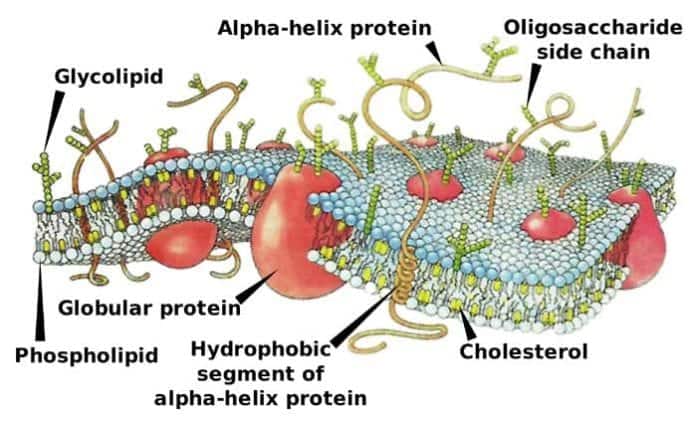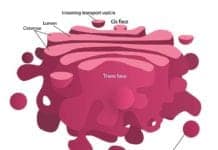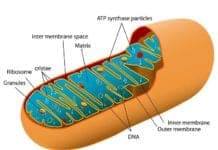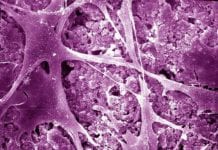
Plasma Membrane Functions: By definition, biological membranes are types of membranes that serve as a semi-permeable barrier within living things. Biological membranes are made up two components: phosphate groups and lipids, hence, phospholipid.
But despite having these similar components, each still possesses distinct characteristics like the presence of a unique set of proteins, or different concentration of its composition.
In this article, we will explore more about one of the most commonly known biological membrane, the plasma membrane. Check out the science of cell drinking called Pinocytosis as well.
Discover its various properties and characteristics that make it different as compared with other biological membrane types. Let’s take a closer look.
Table of Contents
What is the Plasma Membrane?
The plasma membrane[1] is a biological membrane that serves as the boundary between the outer and inner cellular environment. This membrane also permits the cell itself to connect with its environment (as well as with other cells) in a regulated manner.
Interestingly, when placed in water, the plasma membrane can easily transport into bilayers and repair itself whenever torn.
![]()
Components of Plasma Membrane
First proposed by scientists Seymour Jonathan Singer and Garth Nicolson in 1972, the Fluid Mosaic Model is the model that accounts for the explanation of the plasma membrane structure. According to this model, the plasma membrane is composed of different “mosaic” of molecules: phospholipids, cholesterol, proteins, and carbohydrates, all of which contributes to it “fluid-like” property.
1. Phospholipids
The first important component of plasma membrane is the phospholipidis, a type of lipid that is made up of a polar head group and a hydrophobic tail. Because of their amphipathic nature (being composed of both hydrophilic and hydrophobic portion), they are able to create bilayers when placed in water.
- In this kind of environment, the hydrophilic heads of the phospholipid are what face the water at the surface whereas the hydrophobic tails are protected from the water inside.
![]()
2. Cholesterol
Like phospholipids, cholesterol[2] is also composed of a hydrophilic and a hydrophobic part. Its OH (hydroxyl) group is what connects to the phospholipid head while the rest just connects with the fatty acid.
- Without this molecule, the plasma membrane will become very watery and not rigid enough and it will be permeable to ions and molecules.
![]()
3. Proteins
The plasma membrane itself is embedded with a wide variety of proteins that serve important functions.
- Such include the driving of the entry and exit of molecules, forming boundaries between the inner and outer cellular environment, and responding to various receptors in the environment and from other cells.
![]()
4. Carbohydrates
Carbohydrates are another major component of plasma membrane where some of its molecules may also be seen on the outer surface of the membrane. In these locations, they are linked to lipids and proteins, producing glycolipids and glycoproteins respectively.
In general, most plasma membranes[3] are highly permeable to small uncharged particles and some non-polar molecules like oxygen and carbon dioxide. They also allow uncharged polar molecules like water but not larger ones like sugars (i.e. glucose).
Interestingly, they also do not allow the entry of charged molecules, regardless of their size. Such semi-permeability[4] is highly necessary for overall cell control, maintenance of cell composition, and constant internal environment.
![]()
Functions of the Plasma Membrane
As the components of the cell membrane are known at this point, what is the function of the plasma membrane? Let’s explore. The structure and function of cells are greatly determined by the plasma membrane themselves, which do not only act as a barrier between the internal and external cellular environments. Other functions are elaborated below.
1. Role in Selective Transport
As alluded to earlier, one of the most distinct properties of the plasma membrane is semi-permeability.
- This selective property makes sure that the important biomolecules like carbohydrates, amino acids, and lipids can easily penetrate through the membrane, essential metabolites stay inside, and waste materials move out of the cell.
![]()
2.Function As Receptors
Transmembrane receptors (also called cell-surface receptors) are kinds of proteins that can bind to external ligands (ions) and are the ones that line the plasma membrane for their function during signal transduction.
- Because of these transmembrane receptors in the plasma membrane, ions found outside the cells no longer have to enter the cell in order to initiate action. Hence, the process of signal transduction becomes faster.
![]()
3.Provide Additional Support
This function of plasma membrane can readily be observed in epithelial cells of most body cavities (i.e. stomach and intestines) of animal cells.
- In these locations, the plasma membrane of a single epithelial cell tends to connect with other epithelial cells, therefore providing additional structural rigidity to the epithelium itself.
![]()
Variation Among Living Organisms
The structure, fluidity, and overall characteristics of plasma membranes are precisely regulated among living organisms. For instance, the lipid bilayers of most plasma membranes are not exclusively made up of phospholipids but are also composed of other components.
1. In Prokaryotes and In plants
The prokaryotic plasma membrane come as an inner layer of protection[5] because of the cell wall already present to act as boundary for the cells. The cell wall is packed with pores that permits the entry and exit of particles.
- The plasma membrane is what lines the cell wall and it functions as the final filter between the inner cell and the outside environment.
![]()
2. Eukaryotic Animal Cells
At present, it is believed that eukaryotic organisms, in general, have descended from their prokaryotic counterparts. Most eukaryotic organisms have components called the organelles, that are enclosed in cell membranes.
- With the exception of plant cells, the eukaryotic cell membrane allows the segregation of the internal and outside cellular environment.
![]()
As seen from above, the plasma membrane can become highly diverse within living organisms. After all, it is the components of the “mosaic” that helps the plasma membrane. If they didn’t, our cells will merely become unrelated entities rather than the organisms that we are. What do you think?
![]()
Cite This Page
References
- [1] – “Structure of the plasma membrane (article) |
Khan Academy”. Accessed August 04, 2017. Link. - [2] – “Cholesterol’s Importance to the Cell Membrane”. Accessed August 04, 2017. Link.
- [3] – “Cell Membranes – The Cell – NCBI Bookshelf”. Accessed August 04, 2017. Link.
- [4] – “Transport across Cell Membranes – Molecular Cell Biology – NCBI Bookshelf”. Accessed August 04, 2017. Link.
- [5] – “Molecular Expressions Cell Biology: Plasma Membrane”. Accessed August 04, 2017. Link.






















